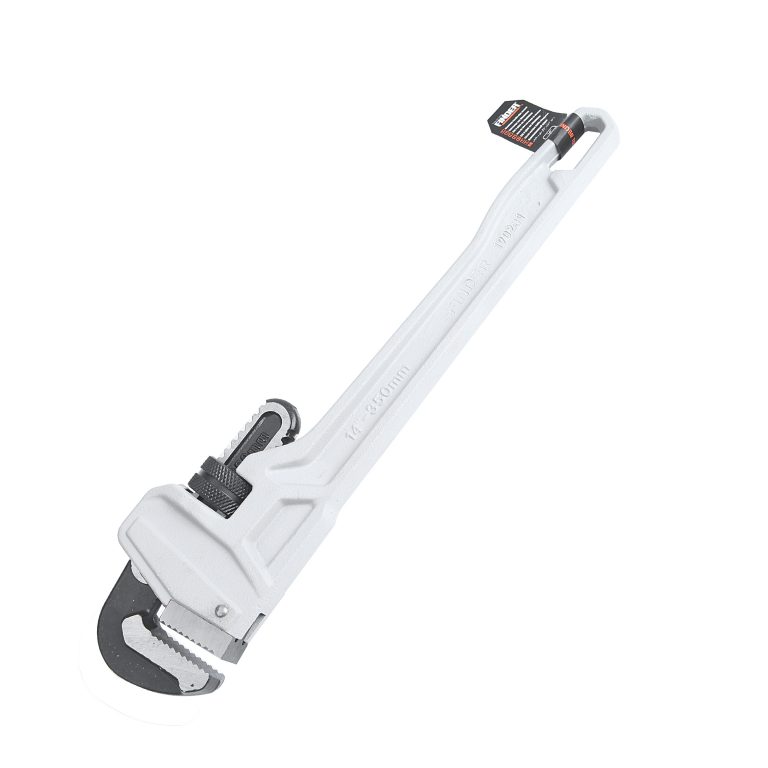Pipe Wrenches Overview
Pipe wrenches, also known as pipe spanners or plumbing wrenches, are indispensable tools for a wide range of specific applications. Whether it’s automotive repair, plumbing, or construction, these adjustable wrenches offer a versatile gripping solution for specialized tasks. Understanding the particular uses and benefits of pipe wrenches is essential for their effective application in various purposes. This blog will delve into the types of pipe wrenches available, how to choose the right size, proper usage techniques, materials and construction details, maintenance and care tips, safety precautions, and alternatives to these mechanical tools.

Wrench Types
Different Types of Pipe Wrenches
- Pipe wrenches are available in various types, each serving specific purposes in different applications. The straight pipe wrench is commonly used for general-purpose work and is ideal for gripping and turning pipes. Offset pipe wrenches, with their angled handle, provide better access to tight spaces and are suitable for tasks in confined areas. End pipe wrenches, also known as compound leverage wrenches, offer increased leverage and are designed for heavy-duty applications where a secure grip is essential.
Advantages of Each Pipe Wrench Type
- Each type of pipe wrench offers distinct advantages tailored to its specific design and intended use. The straight pipe wrench provides a strong grip and is versatile for a wide range of applications. Offset pipe wrenches excel in accessing hard-to-reach areas, offering convenience and maneuverability. End pipe wrenches deliver superior leverage, making them suitable for heavy-duty tasks that require extra strength and stability.
Size and Material
Choosing the Right Size of Pipe Wrench
When selecting a pipe wrench, choosing the right size is crucial for effectively completing specific applications. The size of the pipe wrench determines its capacity to provide a secure grip without causing damage to the workpiece. For particular uses, it’s essential to match the size of the wrench to the diameter of the pipe being worked on. Larger pipes require larger wrenches, while smaller pipes necessitate smaller wrenches for optimal results in specialized tasks. By using the correct size for each job, you can ensure that the pipe wrench provides a firm and secure grip without compromising the integrity of the workpiece.
Materials and Construction of Pipe Wrenches
Understanding the materials and construction of pipe wrenches is vital for ensuring their durability and effectiveness in various applications. Pipe wrenches are commonly constructed from durable materials such as steel or aluminum, with some models featuring reinforced components for added strength. Different materials offer specific advantages tailored to specific purposes and cater to varying working conditions. The construction quality directly impacts the longevity and performance of the tool, making it essential to consider these factors when selecting a pipe wrench for a particular task.
Usage and Maintenance
Proper Usage Techniques of Pipe Wrenches
When it comes to wrench benefits and the advantages of using wrenches, employing proper usage techniques is paramount for achieving efficient and safe completion of tasks across various applications. Here are some essential techniques to ensure the effective use of pipe wrenches:
- Always position the pipe wrench properly on the workpiece, ensuring a secure grip without slippage.
- Use the wrench at a suitable angle to maximize leverage and minimize effort, promoting ease of use and reducing strain on the user.
- Avoid applying excessive force that may lead to distortion or damage to the pipe or workpiece, instead utilizing controlled pressure for a secure hold.
By adhering to these techniques, users can prevent damage to the workpiece while maximizing the longevity and reliability of the tool.
Maintenance and Care of Pipe Wrenches
Regular maintenance and care play a crucial role in preserving the perks and benefits of using wrenches. To ensure optimal performance and longevity, consider these maintenance practices:
- Keep the wrench clean and free from debris or contaminants that may compromise its functionality.
- Periodically lubricate moving parts to prevent corrosion and maintain smooth operation.
- Check for any signs of wear or damage, addressing issues promptly to prevent further deterioration.
By implementing these maintenance practices, users can prolong the life of their pipe wrenches while upholding their reliability in various applications.
Safety and Alternatives
Safety Precautions When Using Pipe Wrenches
When working with pipe wrenches, it’s crucial to prioritize safety to prevent accidents and injuries. Here are some essential safety precautions to consider:
- Always inspect the pipe wrench for any signs of wear or damage before use, ensuring that it is in optimal condition.
- Wear appropriate personal protective equipment, including gloves and eye protection, to safeguard against potential hazards.
- Use the pipe wrench within its specified capacity limits, avoiding excessive force that could lead to tool failure or workpiece damage.
- Maintain a secure footing while using the wrench to prevent slips or falls, especially when exerting force on stubborn fittings.
By following these safety measures, users can create a secure working environment and minimize the risk of accidents associated with pipe wrench usage.
Alternatives to Pipe Wrenches
In certain specific applications, alternative tools may offer flexibility and options for completing tasks. Some alternatives to consider include:
- Adjustable wrenches: Ideal for tasks where a more precise grip is required on smaller fasteners or fittings.
- Strap wrenches: Useful for gripping and turning smooth-surfaced objects without marring or damaging them.
- Tongue-and-groove pliers: Provide a strong grip on various shapes and sizes of objects, offering versatility in particular uses.
Understanding these alternatives helps in selecting the most suitable tool for specialized tasks, ensuring efficient completion while considering specific purposes.
Pipe Wrench Versatility
Pipe wrenches exhibit remarkable versatility and practicality across a wide spectrum of applications, establishing them as indispensable mechanical tools for tasks such as plumbing, automotive repair, and construction. Recognizing the diverse features and benefits of pipe wrenches is pivotal for their effective utilization in specific applications, ensuring optimal outcomes and safety. Delving into the applications, characteristics, and maintenance of pipe wrenches provides a comprehensive understanding of their significance as essential mechanical tools.
